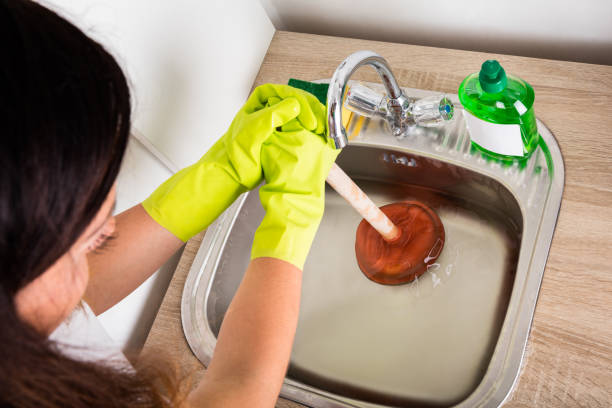Sluggish drains? Blockages? Slow flowing water? These are clear signs that your drains or pipes need repair or replacement. Over-the-counter products and DIY repairs can work, but sometimes you need to call in the professionals. Working with a local licenced plumber can save time and frustration by quickly restoring water flow to your home or business, whether it’s a blocked drain pipe or a broken sewer line.
The good news is that you may be able to fix the problem yourself by clearing the drain with a few simple steps. Although you can always call in a professional, it may be easiest to follow some of these steps and contact a professional plumber if you need a specialised service.
Pour boiling water down the drain
If you need to clean a blocked metallic or ceramic drain, you can solve the problem with this method. Just pour boiling water down the drain, which will melt the blockage affecting your pipe. For PVC pipes (or polyvinyl chloride), it is enough to run heated (NOT boiling) tap water into the pipes to loosen the connections.
Use a bent wire hanger
Get a wire hanger, bend it into a J shape and insert the hook at the end into the drain. By pulling the wire up and down, you’ll be able to pull out a lot of hair stuck in the drain. This method is not very efficient but still works well if hair continues to get stuck in your drain.
Unblock the drain with a plunger
You will need a plunger if you want to unclog your sink without using chemicals. This is usually reserved for clogged toilets, but it’s effective for loosening solids and liquids in your drains too. Just make sure your overflow holes aren’t covered before you begin. Use up and down plunging motions to loosen any blockages.
Try a DIY cleaner
You can use bicarbonate and white vinegar to free your blocked drains. This will trigger a chemical reaction that will dissolve the blockage in your pipes. First, pour the bicarbonate into the drain – be careful as it will form bubbles. Then pour white vinegar down the drain to complete the process. Repeat this, and then flush hot water down the drain to wash away any residue.
Use a chemical product
Caustic cleaners can be helpful for specific problems, but they are highly toxic and not at all environmentally friendly. Many of these products contain harsh chemicals such as sodium hydroxide, ammonia and hydrochloric acid that can cause severe eye, skin and respiratory irritation if misused. To avoid accidents, it is best to eliminate the source of the problem by calling in a professional plumbing service.
Call a plumber with a pressure washer
Hydro-jetting is a professional method of clearing drain and pipe blockages. It involves forcing a high-pressure jet of water into the blocked pipes or drain to flush away the obstruction. This method can clear all clogs, including grease, soap scum and even tree roots. As a bonus, pressure washing can also clear your plumbing infrastructure to prevent future blockages.
Use drain snakes
Drain snakes are often used by plumbers for severe blockages. These devices work by using a rotating coil at the end of the cable. The coil spins rapidly to chip away any obstruction in the pipe. Drain snakes have a limited reach, so the clog must be further up the drain for this method to work.
Add on CCTV inspections
If you are struggling with reoccurring drain blockages, a drain camera inspection may be just what you need. These blockages are often caused by an underlying problem, such as a broken pipe, a root-bound pipe, or heavy grease and soap buildup. Conventional drain rods only provide a temporary solution. So if the problem persists, it’s best to perform a camera inspection. This way, your plumber can determine the cause of the problem and its exact location, making the repair much cheaper and more effective. Keep in mind that the drain must be clear for the camera inspection to be performed.
Hire a plumber to do an excavation to remove blockages
A qualified plumber performs this complicated task in extreme cases. They need the exact location of the pipes to repair or replace them. The procedure can be restored after the work is completed to return the site to normal. This method is more complicated and time-consuming, so it is used only in severe cases.
Hire a plumber for pipe relining
Pipe relining is a quick and easy way to fix your broken pipes without digging them up. You can seal any cracks and prevent future breaks by installing a new, durable pipe section in the damaged pipe. This will also result in better flow in your piping system. Epoxy resin is used to coat the inside of the pipes. The type of piping determines what kind of epoxy resin must be used. For example, drinking water pipes must be coated with a certified safe and chemical-free epoxy resin.
Drain blockages can be a nuisance, and fixing them yourself can be dangerous. That’s why it’s always best to leave it to the professionals. They have the experience and know-how to get the job done quickly and efficiently without putting you or your family at risk.
